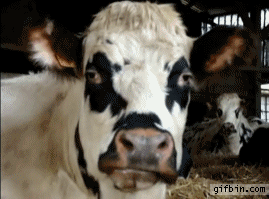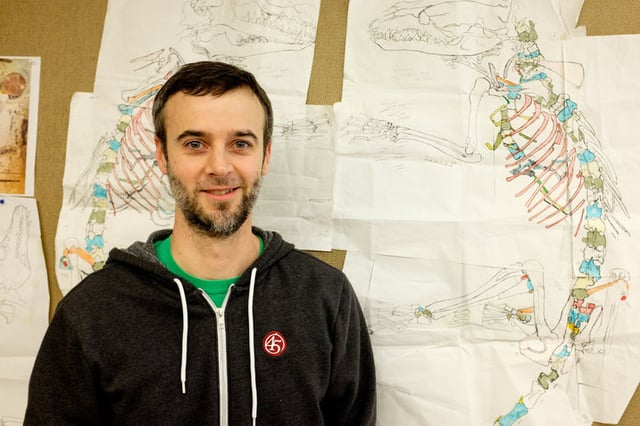How chewing like a cow helped early mammals thrive
How chewing like a cow helped early mammals thrive
You probably haven't given much thought to how you chew, but the jaw structure and mechanics of almost all modern mammals may have something to do with why we're here today. In a new paper published this week in Scientific Reports, David Grossnickle, a graduate student in the Committee on Evolutionary Biology at the University of Chicago, proposes that mammal teeth, jaw bones and muscles evolved to produce side-to-side motions of the jaw, or yaw, that allowed our earliest ancestors to grind food with their molars and eat a more diversified diet. These changes may have been a contributing factor to their survival of the mass extinction at the end of the Cretaceous Period 66 million years ago.
 The terms "pitch" and "yaw" usually describe movements of airplanes, but biologists also use them to describe basic movements of body parts such as the jaw. Pitch rotation results in basic up and down movement, and yaw rotation results in side-to-side, crosswise motion (think of a cow munching away on some grass). Almost all modern mammals, including placental mammals, like humans and deer, and marsupials, like kangaroos and opossums, share similarities in their jaw structures and musculature that allow for both pitch and yaw movements. This allows mammals to have especially diverse diets today, from cutting pieces of meat to grinding tough plants and vegetables. For early mammals, these characteristics meant they could be more resourceful during tough times.
The terms "pitch" and "yaw" usually describe movements of airplanes, but biologists also use them to describe basic movements of body parts such as the jaw. Pitch rotation results in basic up and down movement, and yaw rotation results in side-to-side, crosswise motion (think of a cow munching away on some grass). Almost all modern mammals, including placental mammals, like humans and deer, and marsupials, like kangaroos and opossums, share similarities in their jaw structures and musculature that allow for both pitch and yaw movements. This allows mammals to have especially diverse diets today, from cutting pieces of meat to grinding tough plants and vegetables. For early mammals, these characteristics meant they could be more resourceful during tough times.
"If you have a very specialized diet you're more likely to perish during a mass extinction because you're only eating one thing," Grossnickle said. "But if you can eat just about anything and 90 percent of your food goes away, you can still live on scraps."
Using 2D images of early mammal fossils from previous publications and 3D data collected from modern specimens at the Field Museum, Grossnickle analyzed the structure of teeth, jaw bones, and how the muscles that control them were attached to the skull. He saw that as species began to develop a projection on the upper molars that fit into a corresponding cup or basin on their lower counterparts, the musculature of the jaw also changed to provide greater torque for side-to-side yaw movements. This way the animal could grind its food between the molars like a mortar and pestle, as opposed to cutting it with simple up and down pitch movements.

Grossnickle, who works in the lab of Zhe-Xi Luo, PhD, professor of organismal biology and anatomy, studies the early origins of mammals, and is interested in broader questions about why certain mammal groups have diversified through time and survived extinction events. He says the adaptations of the jaws and teeth may have been key.
"Mammals rebounded from those events and kept diversifying and persisting, and that's one of my interests. Why are we in the Age of Mammals, not still in the Age of Dinosaurs?" he said. "This study begins to address that question from a functional perspective, looking at what changes occurred that might've given some mammals functional or dietary advantages over other groups."

